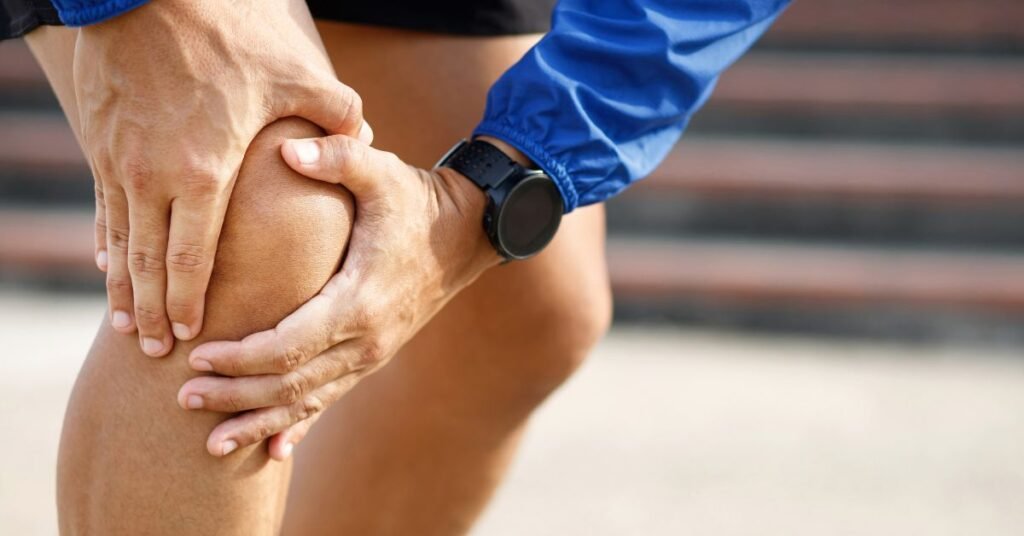Table of contents
1. Introduction
Knee Pain can be due to a variety of reasons like injury, being overweight, overuse, sedentary lifestyle, etc.
Yoga works in a holistic approach and offers an effective way of relieving knee pain by strengthening muscles around the knee and promoting overall general health.
2. Causes of Knee Pain
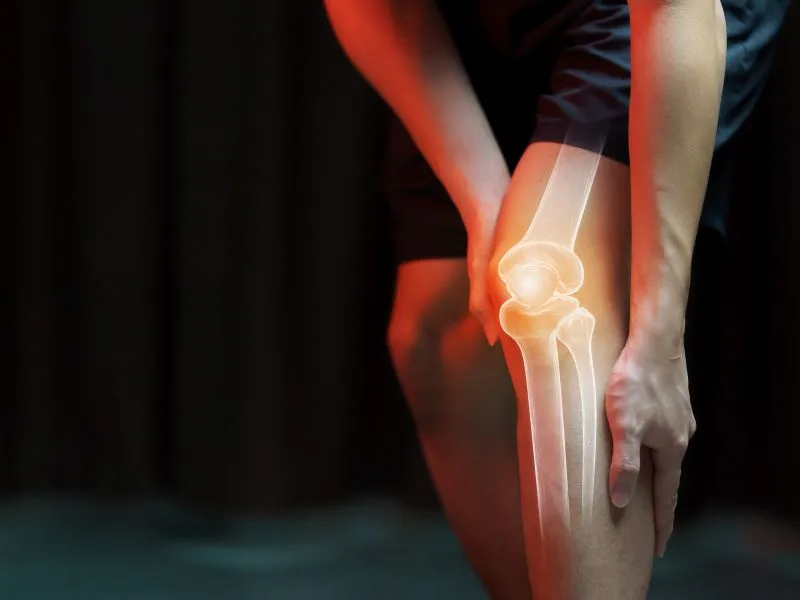
Before embarking on a yoga journey to alleviate knee pain, it’s vital to identify the underlying causes. Some common causes include:
- Injuries: Sprains, strains, ligament tears, and meniscus injuries can lead to knee pain.
- Arthritis: Osteoarthritis or rheumatoid arthritis.
- Overuse: Repetitive activities and excessive strain on the knees can result in discomfort.
- Obesity: Excess weight can put additional stress on the knee joint, leading to pain and deterioration.
- Imbalance and Weak Muscles: Muscle imbalances and weakness can affect the alignment of the knee joint, causing pain.
- Medical Conditions: Certain conditions like gout or infections can also contribute to knee pain.
3. The Role of Yoga in Managing Knee Pain
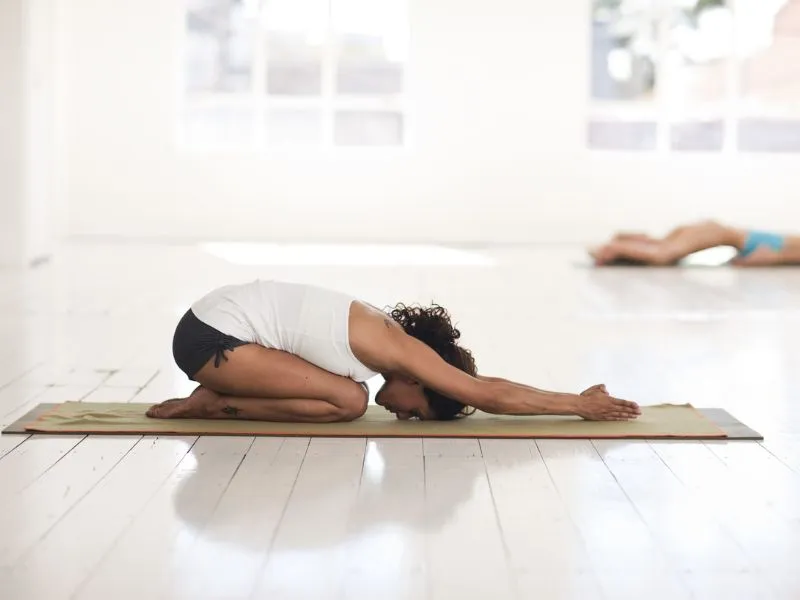
Yoga is a holistic practice that focuses on physical postures, breathing techniques, meditation, and relaxation techniques.
When practiced mindfully and under proper guidance, yoga can provide relief from knee pain and enhance joint flexibility. Here are some benefits of incorporating yoga into your routine:
4.1. Benefits of Yoga for Knee Pain
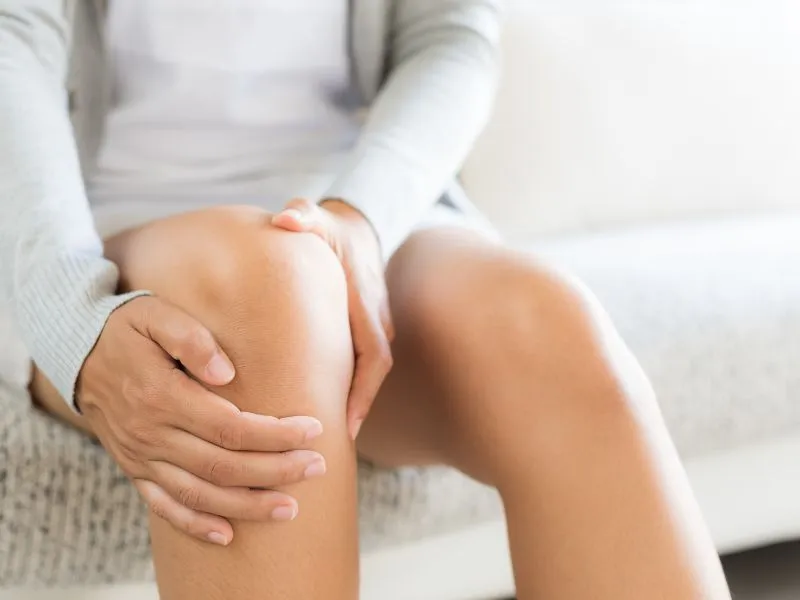
- Improved Flexibility: Yoga postures gently stretch the muscles around the knees, promoting flexibility and reducing stiffness.
- Enhanced Strength: Specific yoga poses target the muscles supporting the knees, helping to build strength and stability.
- Joint Lubrication: The gentle movements in yoga improve the flow of synovial fluid, which lubricates the knee joints.
- Mind-Body Connection: Yoga fosters a mind-body connection, increasing awareness of body movements and alignment to prevent injury.
4.2. Precautions and Safety Tips
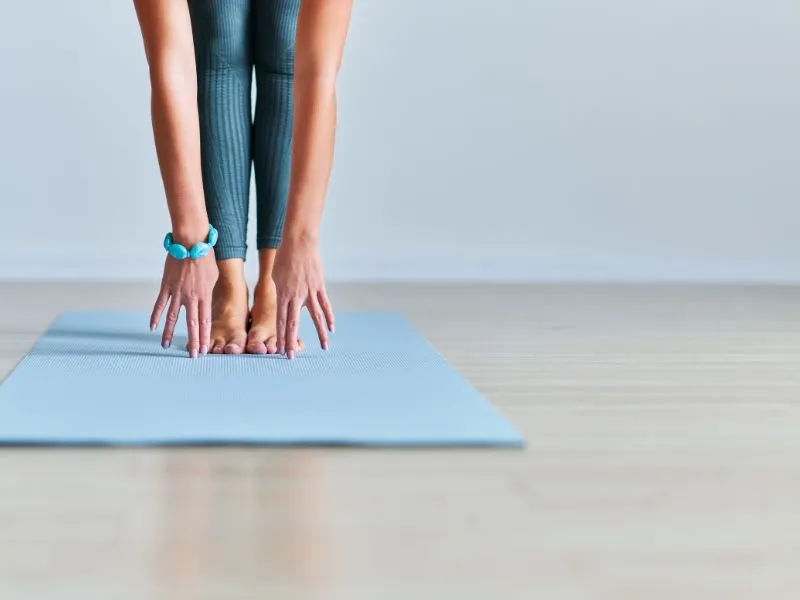
While yoga can be beneficial, it’s essential to approach it mindfully, especially if you have knee pain. Here are some precautions to consider:
- Consult Your Physician: Before starting any yoga practice, consult your healthcare provider, especially if you have a pre-existing knee condition or a recent injury.
- Listen to Your Body: Avoid pushing yourself into poses that cause pain or discomfort. Modify poses as needed to suit your individual limitations.
- Use Props: Yoga props, such as blocks and straps, can provide support and make the practice more accessible.
- Avoid High-Impact Poses: Certain poses, like deep knee bends, may aggravate knee pain. Be cautious and avoid these poses if necessary.
5. Yoga Poses for Knee Pain Relief
Here are some yoga poses that can help alleviate knee pain and promote knee joint health:
5.1 Knee Cap Tightening
- Sit straight with your legs straight on the floor.
- Now with an inhale pull the kneecap towards the thigh.
- Hold for 4-5 sec and then release.
- You can repeat this practice 5 -6 times.
5.2 Janu Naman (knee bending)
- Sit straight with your legs straight on the floor.
- Bend the right knee and clasp the hands under the right thigh.
- Straighten the right leg, pulling up the kneecap.
- Keep the hands under the thigh but straighten the arms.
- Do not allow the heel or toes to touch the floor.
- Bend the right leg at the knee so that the thigh comes close to the chest and the heel near the buttocks.
- Keep the head and spine straight.
- This is one round. Practice 10 rounds with the right leg and then 10 rounds with the left leg.
5.3 Paschimottanasana (Seated Forward Bend)

- Sit straight with your legs straight on the floor.
- Keep your back straight.
- With an inhale stretch your arms upwards
- Now exhale and bend forward by your lower back and try holding your toes.
- Hold for a few seconds.
5.4 Warrior II (Virabhadrasana II)
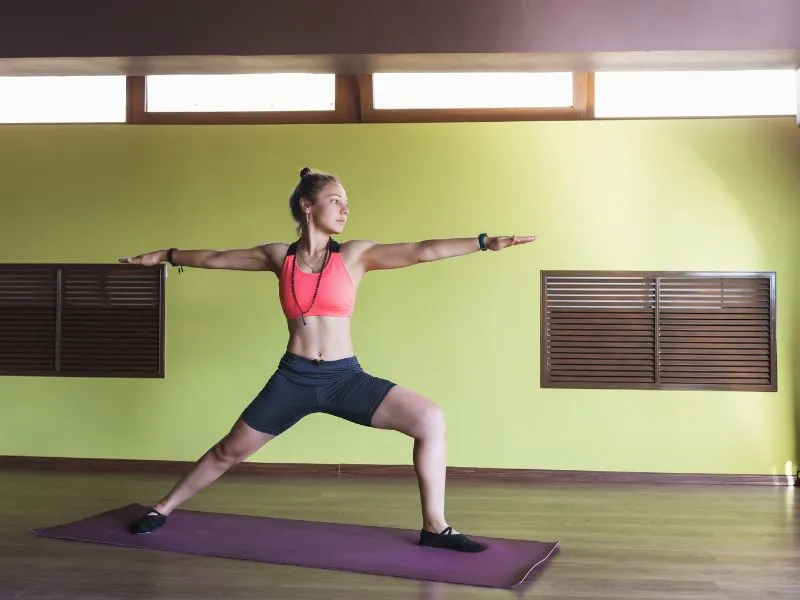
- Stand with feet apart (3-4 ft).
- Turn your right foot out to 90 degrees.
- Inhale and bring your hands upward to shoulder level.
- Exhale and bend your right knee at 90 degrees.
- Hold the pose for a few seconds.
- Repeat with the left leg.
Warrior II strengthens the muscles in the legs, including the quadriceps and hamstrings, promoting stability around the knees.
5.5 Bridge Pose (Setu Bandhasana)
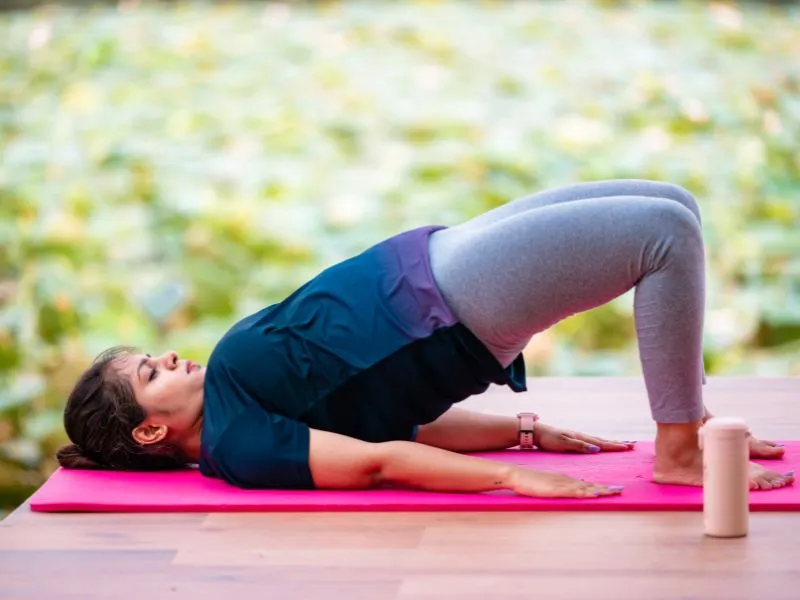
- Lie down on your back keeping your body straight.
- Bend your knees and keep your heels as close to your buttocks as you can.
- Try holding your ankles with your hands.
- Slowly inhale and lift your hips upwards.
- Hold the asana for a few seconds with normal breathing.
- While exhaling slowly bring your hips down.
Other Lifestyle Practices for Managing Knee Pain

In addition to yoga, adopting a few lifestyle changes can further support knee health:
- Maintain a Healthy Weight: If overweight, shedding excess pounds can relieve pressure on the knee joints.
- Proper Footwear: Wear comfortable, supportive shoes that provide cushioning for your feet and knees.
- Hot and Cold Therapy: Applying hot or cold packs can help reduce inflammation and soothe knee pain.
- Balanced Diet: Consume a diet rich in anti-inflammatory foods like fruits, vegetables, and omega-3 fatty acids.
Conclusion

Yoga is a powerful tool for managing knee pain, enhancing flexibility, and improving joint health. By practicing yoga mindfully and incorporating suitable poses into your daily routine, you can experience relief and support your overall well-being.
Remember to consult your healthcare provider before starting any new exercise routine, especially if you have existing knee conditions.
FAQs
Q1. Can yoga worsen knee pain?
A. Yoga, when practiced mindfully and with appropriate modifications, is generally safe for most individuals with knee pain. However, it’s essential to listen to your body and avoid poses that cause discomfort.
Q2. How frequently should I engage in yoga to relieve knee pain?
A. Consistency is key. Aim for at least 4-5 times a week to experience the benefits. Start slowly and gradually increase the frequency as your body adapts.
Q3. Can I do yoga if I have had knee surgery?
A. If you’ve had knee surgery, it’s crucial to consult your surgeon or physical therapist before starting any yoga practice. They can provide specific guidance based on your recovery progress.
Q4. Are there any specific dietary recommendations for knee pain?
A. A balanced diet rich in anti-inflammatory foods can support joint health. Incorporate fruits, vegetables, whole grains, and healthy fats into your meals.
Q5. Is it safe to practice yoga without professional guidance?
A. While yoga can be practiced at home, especially with online tutorials, it’s beneficial to attend classes with a qualified yoga instructor to ensure proper alignment and prevent injuries.
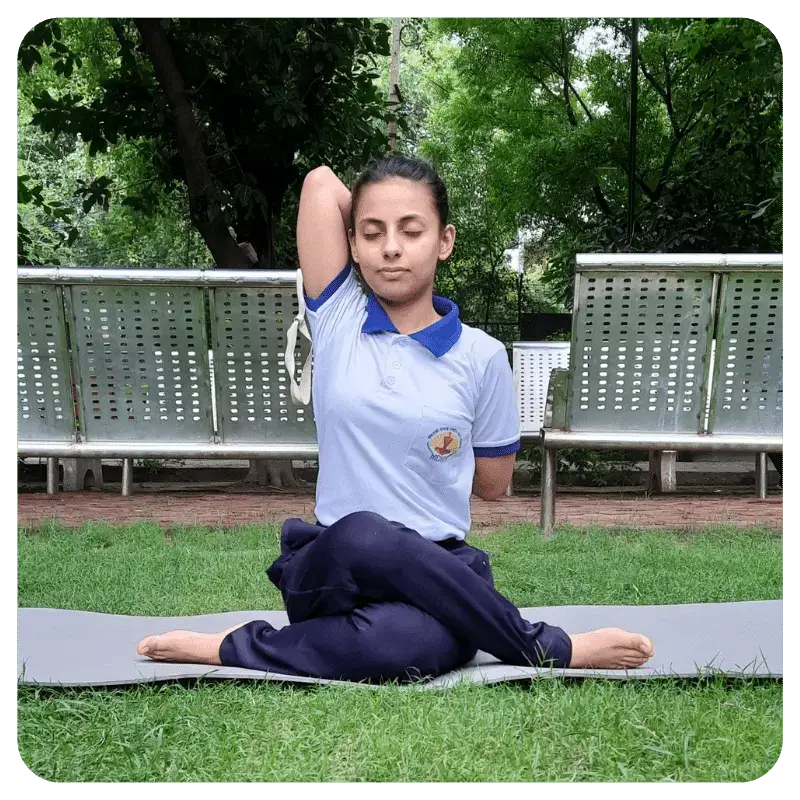
About The Author
Ankita Sapra is a government-certified Yoga Instructor with diploma in Yoga Science and has also completed her Instructor course from SVYASA, Bangalore and has cleared YCB Level 3 (Teacher and Evaluator) exam.
More About Ankita
